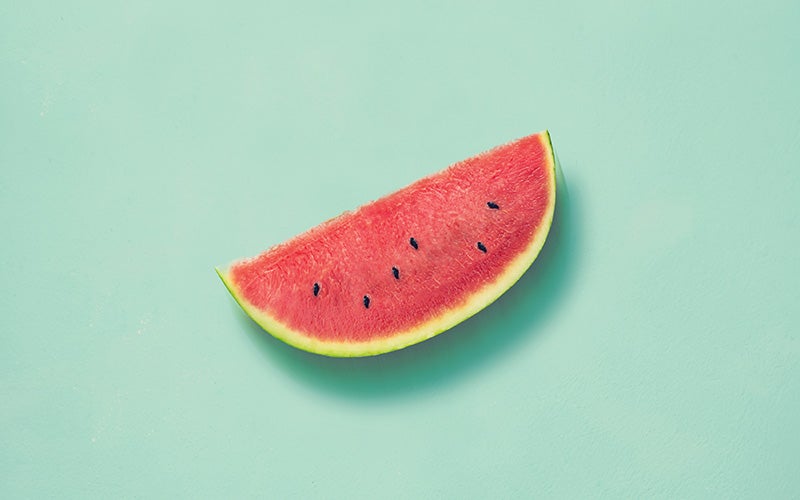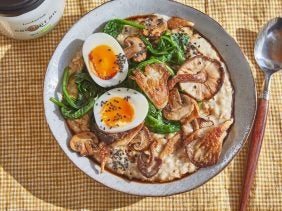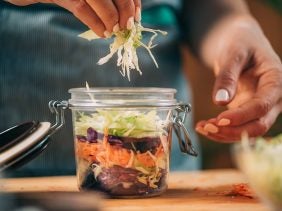Why Watermelon May Be The Best Summer Fruit
 ©Francesco Carta
©Francesco Carta
It’s not summer unless there’s watermelon! No other fruit gives you such a hydrating and tasty boost on hot days, while also being so good in such a wide variety of dishes! Of course you can just enjoy this thirst quencher on its own, but don’t shy away from integrating it into delicious recipes too. We’ve got everything you need to know to make the most of watermelon this summer!
Watermelon Facts
A small mistake was made in the history of the watermelon, with its bright red flesh, when it was lumped together with the citron melon, which comes from South Africa, sometime in the 1930s.
Thanks to some genetic analyses, the confusion has now been cleared up and it is also known that the watermelon doesn’t come from South Africa, but probably tropical West Africa instead. Despite all that, the old botanical name for citron melon, Citrullus lanatus, has stuck.
While we’re on the subject of botany: there are more than 150 varieties of watermelon cultivated in many different parts of the world. These include European countries like Spain, Greece, Italy, and Turkey. It feels particularly at home in a tropical or subtropical climate.
The main season for watermelon is early summer, so it’s easy to find them from May through the end of September. But if you look hard enough, you can find it in supermarkets in the fall and winter because of the harvest season in the USA and South Africa. With its sweet and fresh, juicy taste, it’s conquered the hearts of fruit lovers all over the world.
Is Watermelon a Fruit or Vegetable?
Where can you find watermelon in your favorite supermarket? It’s in the fruit section! But strictly speaking, that’s actually incorrect. Although it is treated as a fruit, it is technically a vegetable.
But its story gets even weirder. In botanical terms, watermelon belongs to the Cucurbitaceae family and is related to cucumber, zucchini, pumpkin, and other squashes.
These squash plants are technically classified as fruiting vegetables. But the fact that watermelons are actually veggies isn’t that important, because what matters is the flavor. That’s why watermelon makes more sense among the fruits in the food world.
Calories and Nutrients: Is Watermelon Healthy?
The name says it all! Watermelon is one of the classic hydrating foods – which is why it’s also super refreshing and a perfect summer snack. In fact, it contains up to 93 percent water in total. That’s what makes this fruit (we’ll keep calling it that) so low in calories.
But the high water percentage also has more health benefits: it can also flush excess salts and uric acid out of the body. And if that’s not a reason to serve yourself an extra glass of watermelon juice, we don’t know what is!
The rest of its nutritional content is also pretty impressive. At just 30 calories per 100 grams, about 0.6 grams of protein and 0.1 grams of fat, watermelon still contains a significant amount of vitamin A for healthy skin and hair, and a small amount of vitamin C, as well as potassium, which can help lower blood pressure.
It’s also rich in a few amino acids, which is why some athletes drink watermelon juice before tough workouts to boost their recovery. The amino acid L-citrulline may also help lower your blood pressure.
With its vitamin C, beta carotene, antioxidants to fight oxidative stress, and other benefits, watermelons are definitely one of the healthy foods to go for when a snack craving hits. You can even eat roasted watermelon seeds by themselves.
But you still need to exercise some caution. If you eat too much, or have a sensitive stomach, you may experience some gas and diarrhea because of its high lycopene content.
Can eating watermelon help me lose weight?
The answer to the question of whether watermelons may help you reach your feel-good weight is actually pretty clear from its nutrition facts alone. As low in calories as it is, it’s definitely better to eat watermelon instead of satisfying your sweet tooth with cakes and candy. Especially on a hot summer day, fresh watermelon is not only the healthier choice but can also help you stay hydrated.
Watermelon’s many health benefits include the fact that it’s low in carbs and very low in sugar, as we mentioned above. To be more precise, watermelon contains just 6 grams of sugar per 100 grams. It’s also one of the plant foods with a low glycemic index, which means that your blood sugar levels rise comparatively slowly after eating it. And that keeps cravings in check.
As always: remember weight loss requires a calorie deficit. If you want to lose weight, we recommend our article about weight loss nutrition plans with everything you need to know.
Knock test: How you can tell if a melon is ripe
The joy of more watermelon disappears pretty quickly when it’s not ripe enough or overripe, and all the watermelon benefits don’t matter if you don’t want to eat it. Avoid unpleasant surprises and test before you buy!
If the melon vibrates slightly when tapped on the rind, and the sound is deep and dull, it should be at the perfect state of ripeness. This is because the high water content of a ripe melon conducts sound really well.
Look for a yellow spot, or field spot, to tell if it was ripened on the vine.
Watermelon: Summertime recipes
Whether pure, in a smoothie, or as a topping for muesli, we cannot and will not imagine a summer without watermelon. It’s also an absolute all-star in the kitchen because it’s so easy to incorporate into a wide variety of recipes. Here are two of our favorites for a refreshing burst of flavor on hot days and cold.
Summer salad with watermelon and feta
(2 – 3 servings)
Ingredients: 800g watermelon, 1/2 cucumber, 1 red onion, 200g feta, 50g pine nuts, thyme, 1 lime, 3 tbsp olive oil, 2 tsp honey, salt, pepper.
Cut the watermelon and washed cucumber into cubes, put everything in a bowl.
Cut the onion, dice the feta or crumble it coarsely, and add them both to the mixture.
Pluck a few leaves of thyme and throw them in the bowl.
Roast the pine nuts in a pan and add to the salad.
For the dressing, mix the juice of the lime, olive oil, honey, and some salt and pepper. Then top the salad with it and mix everything again.
Little tip: Craving some bread to round out this light salad? Check out our Vegan Protein Bread, which is super easy and quick to prepare – and doesn’t require any baking experience or talent.
Watermelon popsicle
We can’t get enough watermelon, so of course we’re not only serving it up as a main course, but also for dessert. Introducing the watermelon popsicle, probably the lowest-calorie frozen dessert. Curious? Here’s a recipe that couldn’t be simpler.

Watermelon: Conclusion
- The watermelon originated in West Africa, but it’s now grown in many European countries as well.
- The fruit, which is technically a vegetable in the squash family, tastes sweet and very juicy.
- It’s a low-calorie, low-sugar, low-carb snack that fits perfectly into a balanced and healthy diet.
- How to recognize a ripe one? Just knock on the rind – if it vibrates slightly, the watermelon is just right.
Sources for this article
We at foodspring use only high-quality sources, including peer-reviewed studies, to support the facts within our articles. Read our editorial policy to learn more about how we fact-check and keep our content accurate, reliable, and trustworthy.





























